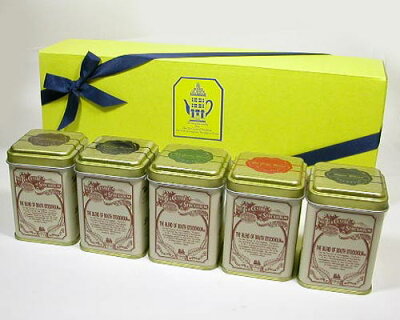
May-Britt and Edvard I. Moser in the laboratory. Photo: Geir Mogen/NTNU.
"We Can Always Talk and Discuss about the Next Steps"
Married
couples where both partners have been awarded the Nobel Prize are not
very common in the history of the Nobel Prize. But in 2014 it happened
again - when May-Britt and Edvard Moser were awarded the Medicine Prize
for their discovery of our "inner GPS". In this podcast, Edvard Moser
talks about their long collaboration and the importance of their
different personalities.
 Listen to Edvard Moser Listen to Edvard Moser |
|
"One without the Other Would Not Have Gone As Far As in Combination"
Gerty
and Carl Cori went through medical school together, graduated, married,
and emigrated from Vienna to Buffalo, sensing the rising anti-Semitism.
In the US, they collaborated in most of their research work on how
hormones and enzymes cooperate. In 1947, after 30 years of team work,
they were awarded the Medicine Prize for their research on glycogen and
glucose metabolism.
 Read Carl Cori's speech at the Nobel Banquet Read Carl Cori's speech at the Nobel Banquet |

Gerty and Carl Cori.
Photo: U.S National Library of Medicine, Images from the History of Medicine Collection
|
|
|

Pierre and Marie Curie.
|
A Fruitful Collaboration
Marie
and Pierre Curie married in 1895. In the same year, Henri Becquerel
discovered that minerals containing uranium emitted a strong radiation.
Marie became interested in these "uranium rays", and her research
resulted in the idea of a totally new element. This made Pierre put his
own research aside and get deeply involved in Marie's project, and in
1898, they discovered two new elements - polonium and radium.
 Read more about the Curies and their work Read more about the Curies and their work |
|
|
A Scientific Couple
Irène
was the eldest daughter of Marie and Pierre Curie. She followed in her
parents' footsteps, and eventually started working at their Radium
Institute. In 1924, Frédéric Joliot came to the institute to work as an
assistant to Marie Curie. It was Irène who taught him the techniques
around the research on radioactivity. They married in 1926. The couple
researched both individually and together, in particular on the
projection of nuclei, which was an essential step in the discovery of
the neutron and the positron. Their greatest discovery was artificial
radioactivity, for which they were jointly awarded the Chemistry Prize
in 1935.
 Have a look into the Joliot-Curie's photo gallery Have a look into the Joliot-Curie's photo gallery |

Frédéric Joliot and Irène Joliot-Curie
|
|
|

Gunnar and Alva Myrdal.
|
Same Interests - Different Prizes
The
Myrdals, Alva and Gunnar, were leading social scientists of the 1930s,
deeply interested in family politics and welfare issues. They are so far
the only wife/husband team to acquire two awards in different
disciplines. Gunnar had already been jointly awarded the 1974 Prize in
Economic Sciences on research on the interrelations between economic,
social and political processes, while Alva was awarded the Nobel Peace
Prize in 1982 for her work countering nuclear proliferation.
 Biography of Alva Myrdal Biography of Alva Myrdal |
|
Monthly Quiz
Who Said This?
"This
must be a world of democracy and respect for human rights, a world
freed from the horrors of poverty, hunger, deprivation and ignorance,
relieved of the threat and the scourge of civil wars and external
aggression and unburdened of the great tragedy of millions forced to
become refugees."
Every Nobel Laureate is an individual
with a different story. In their Nobel Lectures they talk about the work
behind the prize. Nobelprize.org editors' have chosen some favourite
lectures as 'Summer Listening' - listen to them and get inspired!
Who made this quote in their Nobel Peace Prize Lecture? Listen to the lectures and find out. Or make a guess!
|
|
|
|









![【送料無料】山中iPS細胞・ノーベル賞受賞論文を読もう [ 山中伸弥 ]](http://hbb.afl.rakuten.co.jp/hgb/?pc=http%3a%2f%2fthumbnail.image.rakuten.co.jp%2f%400_mall%2fbook%2fcabinet%2f2882%2f9784903532882.jpg%3f_ex%3d400x400&m=http%3a%2f%2fthumbnail.image.rakuten.co.jp%2f%400_mall%2fbook%2fcabinet%2f2882%2f9784903532882.jpg%3f_ex%3d80x80)
![【送料無料】名古屋ノーベル賞物語 [ 中日新聞社 ]](http://hbb.afl.rakuten.co.jp/hgb/?pc=http%3a%2f%2fthumbnail.image.rakuten.co.jp%2f%400_mall%2fbook%2fcabinet%2f8062%2f80620590.jpg%3f_ex%3d400x400&m=http%3a%2f%2fthumbnail.image.rakuten.co.jp%2f%400_mall%2fbook%2fcabinet%2f8062%2f80620590.jpg%3f_ex%3d80x80)
![【送料無料】ノーベル賞はこうして決まる [ アーリング・ノルビ ]](http://hbb.afl.rakuten.co.jp/hgb/?pc=http%3a%2f%2fthumbnail.image.rakuten.co.jp%2f%400_mall%2fbook%2fcabinet%2f0204%2f9784422400204.jpg%3f_ex%3d400x400&m=http%3a%2f%2fthumbnail.image.rakuten.co.jp%2f%400_mall%2fbook%2fcabinet%2f0204%2f9784422400204.jpg%3f_ex%3d80x80)
